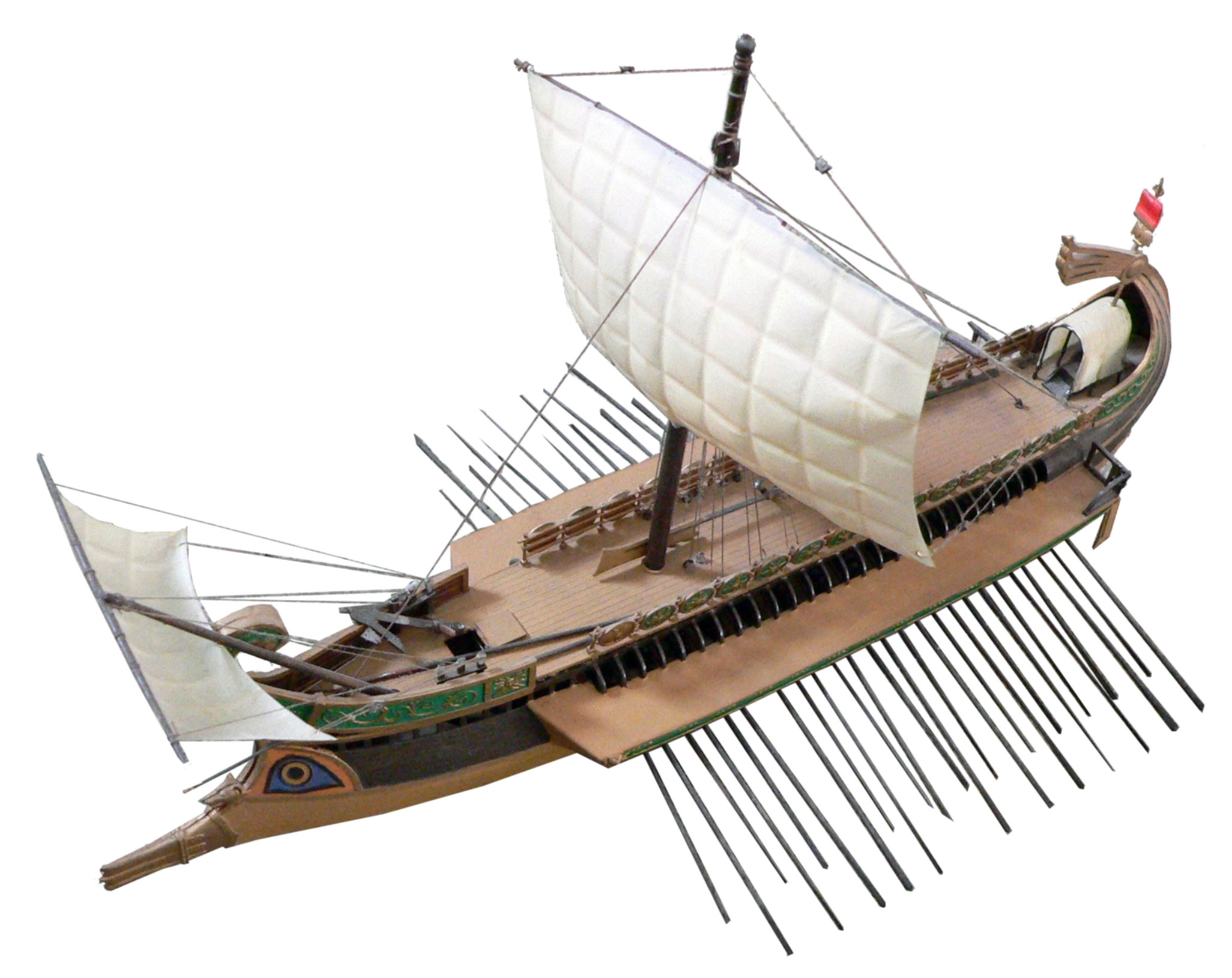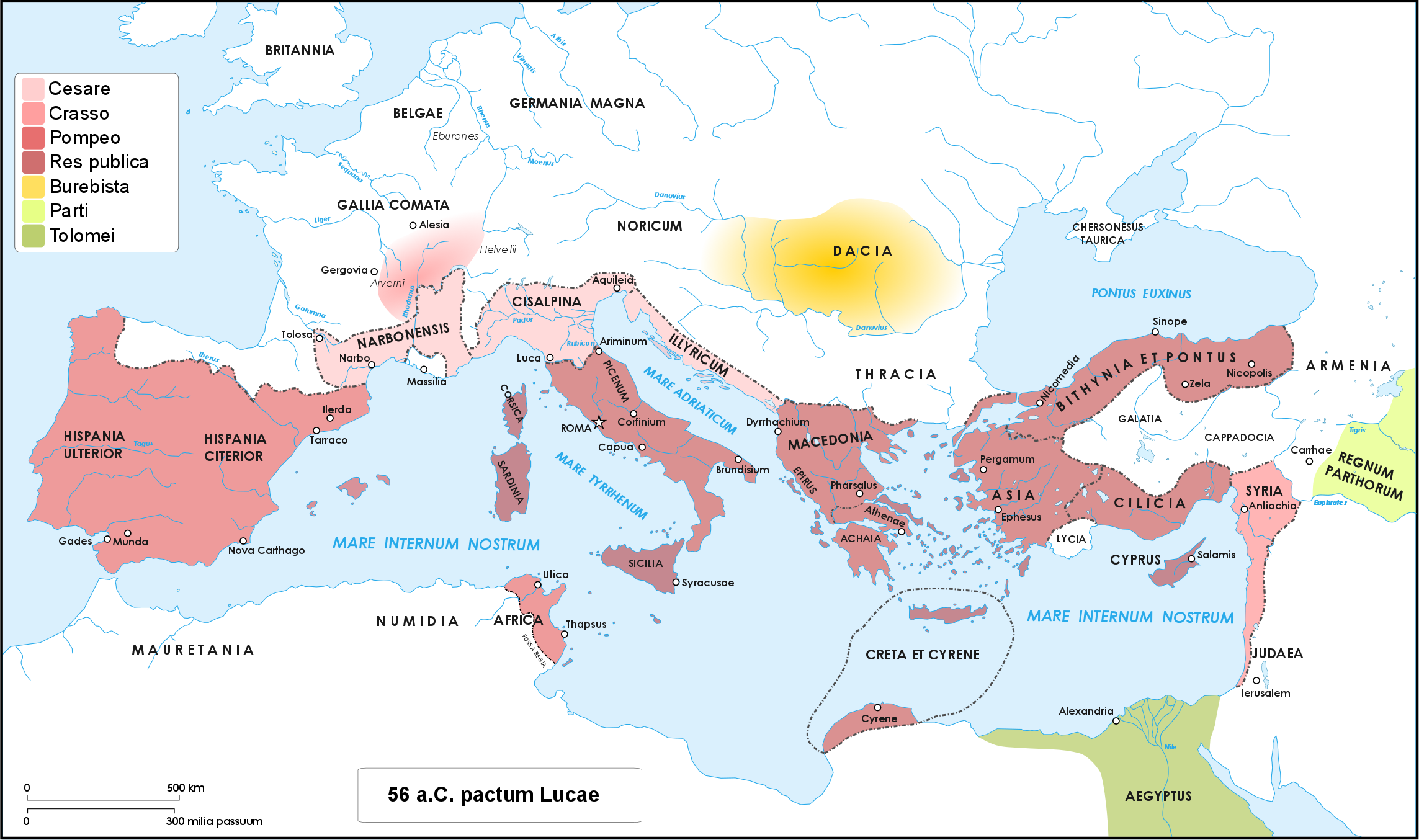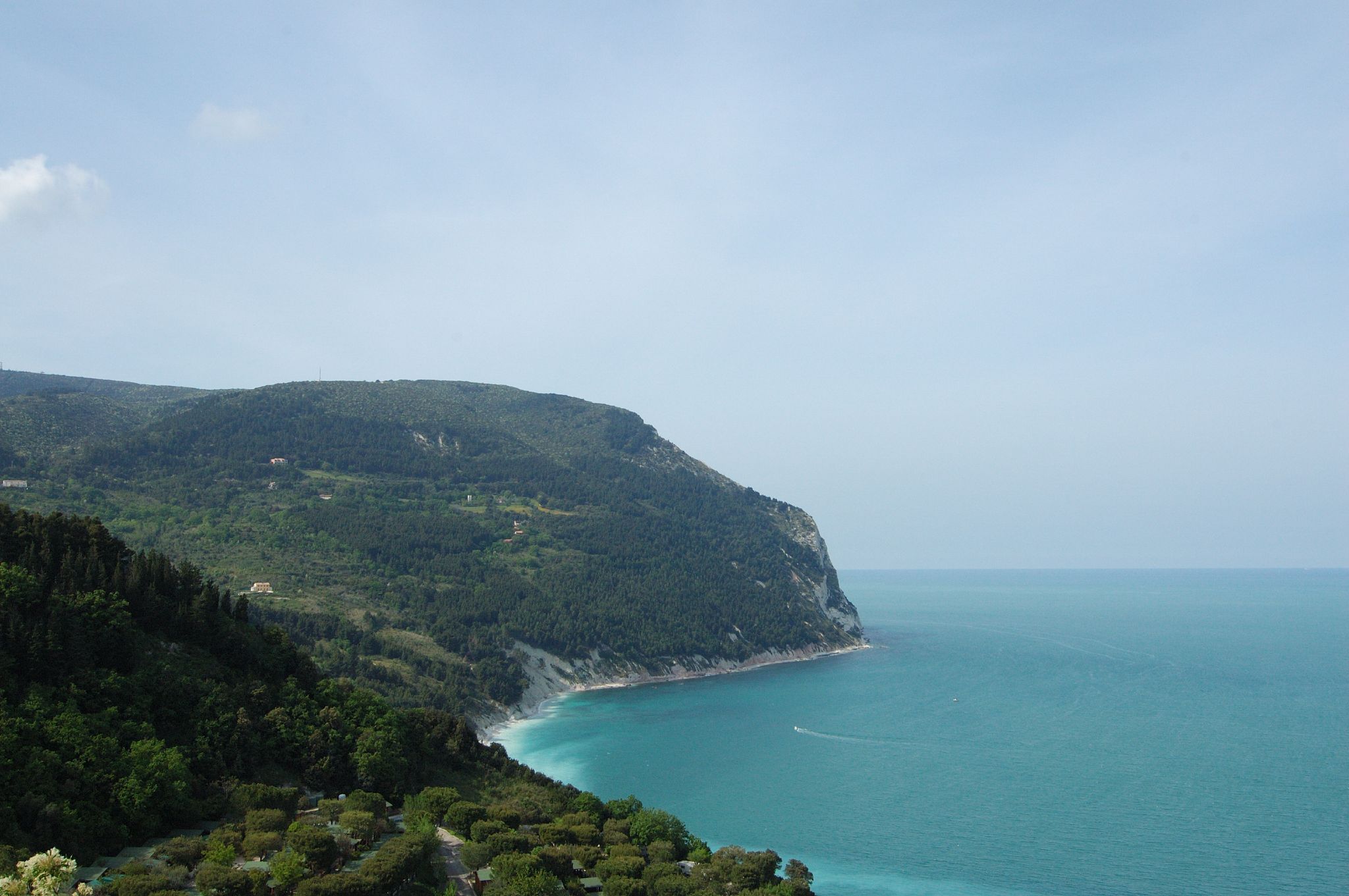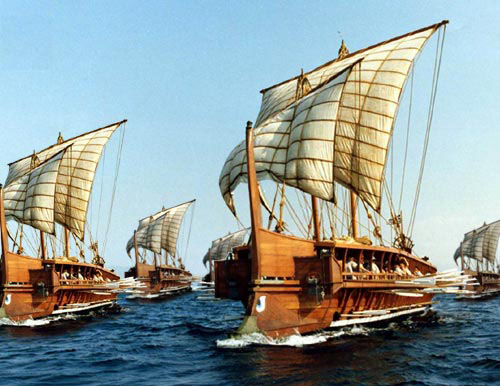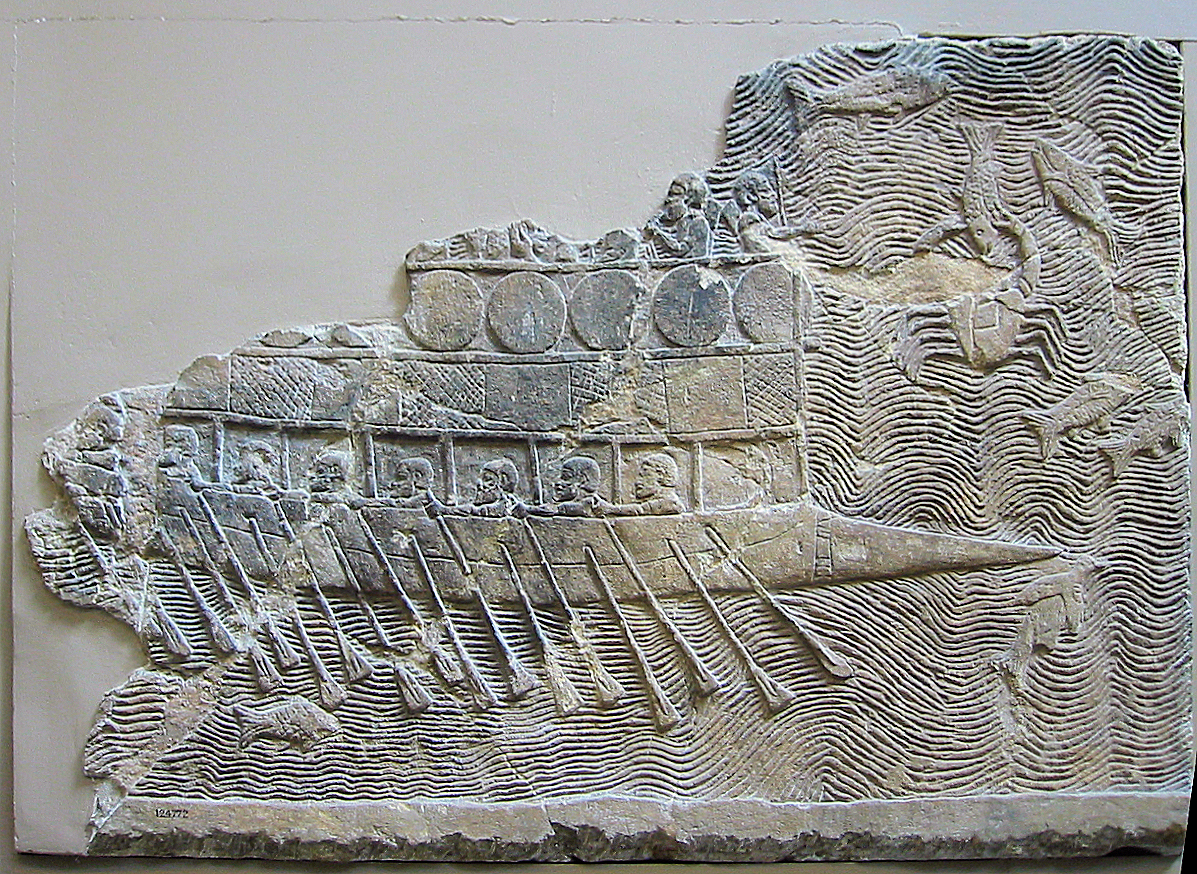|
Battle Of Tauroento
The Battle of Tauroento was a naval battle fought off the coast of Tauroento during Caesar's Civil War. Following a successful naval battle outside Massilia, the Caesarian fleet commanded by Decimus Junius Brutus Albinus once again came into conflict with the Massiliot fleet and a Pompeian relief fleet led by Quintus Nasidius on 31 July 49 BC. Despite being significantly outnumbered, the Caesarians prevailed and the Siege of Massilia was able to continue leading to the eventual surrender of the city. Background On his way to confront Pompey's legions in Hispania, while passing through southern Gaul, Julius Caesar was forced to quickly initiate a siege of the independent Greek coastal city of Massilia against Lucius Domitius Ahenobarbus. After preparations were complete, Caesar continued west leaving Gaius Trebonius in command of the land forces while Decimus Junius Brutus Albinus was in command of the Caesarian fleet. Brutus had been ordered to build 12 new ships and put the ... [...More Info...] [...Related Items...] OR: [Wikipedia] [Google] [Baidu] |
Caesar's Civil War
Caesar's civil war (49–45 BC) was one of the last politico-military conflicts of the Roman Republic before its reorganization into the Roman Empire. It began as a series of political and military confrontations between Gaius Julius Caesar and Gnaeus Pompeius Magnus. Before the war, Caesar had led an invasion of Gaul for almost ten years. A build-up of tensions starting in late 49 BC, with both Caesar and Pompey refusing to back down led, however, to the outbreak of civil war. Eventually, Pompey and his allies induced the Senate to demand Caesar give up his provinces and armies. Caesar refused and instead marched on Rome. The war was a four-year-long politico-military struggle, fought in Italy, Illyria, Greece, Egypt, Africa, and Hispania. Pompey defeated Caesar in 48 BC at the Battle of Dyrrhachium, but was himself defeated decisively at the Battle of Pharsalus. Many former Pompeians, including Marcus Junius Brutus and Cicero, surrendered after the battle, wh ... [...More Info...] [...Related Items...] OR: [Wikipedia] [Google] [Baidu] |
Arles
Arles (, , ; oc, label= Provençal, Arle ; Classical la, Arelate) is a coastal city and commune in the South of France, a subprefecture in the Bouches-du-Rhône department of the Provence-Alpes-Côte d'Azur region, in the former province of Provence. A large part of the Camargue, the largest wetlands in France, is located on the territory of the commune, making it the largest commune in Metropolitan France in terms of geographic territory. (Maripasoula, French Guiana, is much larger than Arles). The city has a long history, and was of considerable importance in the Roman province of Gallia Narbonensis. The Roman and Romanesque Monuments of Arles were listed as UNESCO World Heritage Sites in 1981 for their testimony to the history of the region. Many artists have lived and worked in this area because of the southern light, including Pablo Picasso, Paul Gauguin, Jacques Réattu, and Peter Brown. The Dutch post-Impressionist painter Vincent van Gogh lived in Arles from 1888 ... [...More Info...] [...Related Items...] OR: [Wikipedia] [Google] [Baidu] |
Ancient Massalia
Ancient history is a time period from the beginning of writing and recorded human history to as far as late antiquity. The span of recorded history is roughly 5,000 years, beginning with the Sumerian cuneiform script. Ancient history covers all continents inhabited by humans in the period 3000 BCAD 500. The three-age system periodizes ancient history into the Stone Age, the Bronze Age, and the Iron Age, with recorded history generally considered to begin with the Bronze Age. The start and end of the three ages varies between world regions. In many regions the Bronze Age is generally considered to begin a few centuries prior to 3000 BC, while the end of the Iron Age varies from the early first millennium BC in some regions to the late first millennium AD in others. During the time period of ancient history, the world population was already exponentially increasing due to the Neolithic Revolution, which was in full progress. While in 10,000 BC, the world population stood ... [...More Info...] [...Related Items...] OR: [Wikipedia] [Google] [Baidu] |
Ancient Italian History
Ancient history is a time period from the beginning of writing and recorded human history to as far as late antiquity. The span of recorded history is roughly 5,000 years, beginning with the Sumerian cuneiform script. Ancient history covers all continents inhabited by humans in the period 3000 BCAD 500. The three-age system periodizes ancient history into the Stone Age, the Bronze Age, and the Iron Age, with recorded history generally considered to begin with the Bronze Age. The start and end of the three ages varies between world regions. In many regions the Bronze Age is generally considered to begin a few centuries prior to 3000 BC, while the end of the Iron Age varies from the early first millennium BC in some regions to the late first millennium AD in others. During the time period of ancient history, the world population was already exponentially increasing due to the Neolithic Revolution, which was in full progress. While in 10,000 BC, the world population stood at ... [...More Info...] [...Related Items...] OR: [Wikipedia] [Google] [Baidu] |
49 BC
__NOTOC__ Year 49 BC was a year of the Roman calendar, pre-Julian Roman calendar. At the time, it was known as the Year of the Consulship of Lentulus and Marcellus (or, less frequently, year 705 ''Ab urbe condita''). The denomination 49 BC for this year has been used since the early medieval period, when the Anno Domini calendar era became the prevalent method in Europe for naming years. Events By place and Date Roman Republic * Consuls: Lucius Cornelius Lentulus Crus, Gaius Claudius Marcellus (consul 49 BC), Gaius Claudius Marcellus. * Caesar's Civil War commences: ** January 1 – The Roman Senate receives a proposal from Julius Caesar that he and Pompey should lay down their Command (military formation), commands simultaneously. The Senate responds that Caesar must immediately surrender his command. ** January 10 – Caesar leads his army across the Rubicon, which separates his jurisdiction in Cisalpine Gaul from that of the Senate in Ancient Rome, Rome, and thus ... [...More Info...] [...Related Items...] OR: [Wikipedia] [Google] [Baidu] |
40s BC Conflicts
4 (four) is a number, numeral and digit. It is the natural number following 3 and preceding 5. It is the smallest semiprime and composite number, and is considered unlucky in many East Asian cultures. In mathematics Four is the smallest composite number, its proper divisors being and . Four is the sum and product of two with itself: 2 + 2 = 4 = 2 x 2, the only number b such that a + a = b = a x a, which also makes four the smallest squared prime number p^. In Knuth's up-arrow notation, , and so forth, for any number of up arrows. By consequence, four is the only square one more than a prime number, specifically three. The sum of the first four prime numbers two + three + five + seven is the only sum of four consecutive prime numbers that yields an odd prime number, seventeen, which is the fourth super-prime. Four lies between the first proper pair of twin primes, three and five, which are the first two Fermat primes, like seventeen, which is the third. On the other ... [...More Info...] [...Related Items...] OR: [Wikipedia] [Google] [Baidu] |
Sieges Involving The Roman Republic
A siege is a military blockade of a city, or fortress, with the intent of conquering by attrition, or a well-prepared assault. This derives from la, sedere, lit=to sit. Siege warfare is a form of constant, low-intensity conflict characterized by one party holding a strong, static, defensive position. Consequently, an opportunity for negotiation between combatants is common, as proximity and fluctuating advantage can encourage diplomacy. The art of conducting and resisting sieges is called siege warfare, siegecraft, or poliorcetics. A siege occurs when an attacker encounters a city or fortress that cannot be easily taken by a quick assault, and which refuses to surrender. Sieges involve surrounding the target to block the provision of supplies and the reinforcement or escape of troops (a tactic known as "investment"). This is typically coupled with attempts to reduce the fortifications by means of siege engines, artillery bombardment, mining (also known as sapping), or the use ... [...More Info...] [...Related Items...] OR: [Wikipedia] [Google] [Baidu] |
Hispania Citerior
Hispania Citerior (English: "Hither Iberia", or "Nearer Iberia") was a Roman province in Hispania during the Roman Republic. It was on the eastern coast of Iberia down to the town of Cartago Nova, today's Cartagena in the autonomous community of Murcia, Spain. It roughly covered today's Spanish autonomous communities of Catalonia and Valencia. Further south was the Roman province of Hispania Ulterior ("Further Iberia"), named as such because it was further away from Rome. The two provinces were established in 197 BC, four years after the end of the Second Punic War (218–201 BC). During this war Scipio Africanus defeated the Carthaginians at the Battle of Ilipa (near Seville) in 206 BC. This led to the Romans taking over the Carthaginian possessions in southern Spain and on the east coast up to the River Ebro. Several governors of Hispania Citerior commanded wars against the Celtiberians who lived to the west of this province. In the late first century BC Augustus reorganised ... [...More Info...] [...Related Items...] OR: [Wikipedia] [Google] [Baidu] |
Pompey By Nasidius
Gnaeus Pompeius Magnus (; 29 September 106 BC – 28 September 48 BC), known in English as Pompey or Pompey the Great, was a leading Roman general and statesman. He played a significant role in the transformation of Rome from republic to empire. He was (for a time) a student of Roman general Sulla as well as the political ally, and later enemy, of Julius Caesar. A member of the senatorial nobility, Pompey entered into a military career while still young. He rose to prominence serving the dictator Sulla as a commander in the civil war of 83–82 BC. Pompey's success as a general while young enabled him to advance directly to his first Roman consulship without following the traditional ''cursus honorum'' (the required steps to advance in a political career). He was elected as Roman consul on three occasions. He celebrated three Roman triumphs, served as a commander in the Sertorian War, the Third Servile War, the Third Mithridatic War, and in various o ... [...More Info...] [...Related Items...] OR: [Wikipedia] [Google] [Baidu] |
Trireme
A trireme( ; derived from Latin: ''trirēmis'' "with three banks of oars"; cf. Greek ''triērēs'', literally "three-rower") was an ancient vessel and a type of galley that was used by the ancient maritime civilizations of the Mediterranean Sea, especially the Phoenicians, ancient Greeks and Romans. The trireme derives its name from its three rows of oars, manned with one man per oar. The early trireme was a development of the penteconter, an ancient warship with a single row of 25 oars on each side (i.e., a single-banked boat), and of the bireme ( grc, διήρης, ''diērēs''), a warship with two banks of oars, of Phoenician origin. The word dieres does not appear until the Roman period. According to Morrison and Williams, "It must be assumed the term pentekontor covered the two-level type". As a ship, it was fast and agile and was the dominant warship in the Mediterranean from the 7th to the 4th centuries BC, when it was largely superseded by the larger quadriremes and q ... [...More Info...] [...Related Items...] OR: [Wikipedia] [Google] [Baidu] |
Trireme 1
A trireme( ; derived from Latin: ''trirēmis'' "with three banks of oars"; cf. Greek ''triērēs'', literally "three-rower") was an ancient vessel and a type of galley that was used by the ancient maritime civilizations of the Mediterranean Sea, especially the Phoenicians, ancient Greeks and Romans. The trireme derives its name from its three rows of oars, manned with one man per oar. The early trireme was a development of the penteconter, an ancient warship with a single row of 25 oars on each side (i.e., a single-banked boat), and of the bireme ( grc, διήρης, ''diērēs''), a warship with two banks of oars, of Phoenician origin. The word dieres does not appear until the Roman period. According to Morrison and Williams, "It must be assumed the term pentekontor covered the two-level type". As a ship, it was fast and agile and was the dominant warship in the Mediterranean from the 7th to the 4th centuries BC, when it was largely superseded by the larger quadriremes and ... [...More Info...] [...Related Items...] OR: [Wikipedia] [Google] [Baidu] |
Sicily
(man) it, Siciliana (woman) , population_note = , population_blank1_title = , population_blank1 = , demographics_type1 = Ethnicity , demographics1_footnotes = , demographics1_title1 = Sicilian , demographics1_info1 = 98% , demographics1_title2 = , demographics1_info2 = , demographics1_title3 = , demographics1_info3 = , timezone1 = CET , utc_offset1 = +1 , timezone1_DST = CEST , utc_offset1_DST = +2 , postal_code_type = , postal_code = , area_code_type = ISO 3166 code , area_code = IT-82 , blank_name_sec1 = GDP (nominal) , blank_info_sec1 = €89.2 billion (2018) , blank1_name_sec1 = GDP per capita , blank1_info_sec1 ... [...More Info...] [...Related Items...] OR: [Wikipedia] [Google] [Baidu] |
